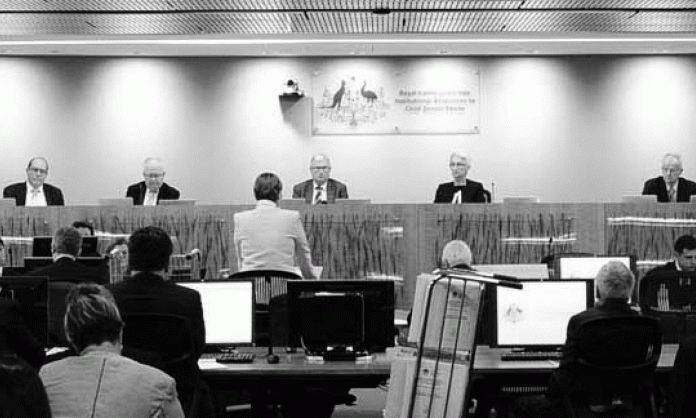Royal commissions have a long and dishonourable history in Australia. There have been more than 100 of them at the federal level alone, and you would be hard pressed to find a worthwhile outcome from any of them.
Ask most people about a good royal commission, and two will spring to mind: the current Royal Commission into Institutional Responses to Child Sexual Abuse, and the Hawke Labor government’s Royal Commission into Aboriginal Deaths in Custody, 1987-91. Both arose from protests and popular pressure lasting years, which governments eventually found it inexpedient to ignore any longer.
While the child sexual abuse inquiry has yet to report, the outcome of the Aboriginal deaths in custody inquiry is typical. Hundreds of recommendations were not implemented, no perpetrators were punished, and the state-sanctioned murders of Aboriginal people continue at an even greater rate than before the royal commission.
It is true that sometimes royal commissions uncover things that the commissioning government would prefer did not see the light of day. This is regarded as an unfortunate accident by those who set them up.
The Costigan royal commission was established in 1980 to assist the Fraser government’s union-busting policies. Its brief was to investigate criminal activities associated with the Ships Painters and Dockers union, but it kept finding that its enquiries led away from the union and towards “bottom of the harbour” tax evasion schemes.
These schemes benefited, not unionists, but corporate moguls like Kerry Packer. All of them survived the royal commission unscathed. The commissioner recommended that the union, however, should be dissolved.
Then there are the royal commissions that arise to advance an explicit ruling class agenda, and do produce the required results. As the Costigan royal commission makes clear, the current Royal Commission into Trade Union Governance and Corruption is not the first time a government has used a royal commission as a way of attacking unions.
You could draw an accurate picture of which unions were troubling the bosses at particular times just by looking at the titles and dates of royal commissions: the sugar industry in 1911–12, industrial troubles on Melbourne wharfs 1919–20, alleged payments to maritime unions 1974–76, the activities of the Federated Ship Painters and Dockers Union 1980–84, the activities of the Australian Building Construction Employees’ and Builders Labourers’ Federation 1981–82 and the building and construction industry 2001–2003.
Unlike the popular royal commissions, these anti-union enquiries were all intended to produce recommendations to be acted on. The current royal commission is unusual only in that the answer the commission is designed to return is so clearly specified in its title.
When the Royal Commission into Union Governance and Corruption was about to begin last year, former Canberra Times editor Crispin Hull sang its praises. In particular, he delighted in the powers royal commissions can have beyond those of the police.
“Without wide coercive powers to question and search, police have not been very successful … police can only pursue individual cases and only after being presented with evidence of reasonable suspicion.” None of that namby-pamby evidence is required for this royal commission to swoop.
The current royal commission is very much a second act to the one set up by Tony Abbott when he was minister for workplace relations in the Howard government. The terms of reference for what became known as the Cole Commission (headed by Terence Cole, QC) alleged intimidation, rorts and violence in the construction industry.
Its real target was clear in how it spent its time: 90 percent was spent investigating the union, and 3 percent on employer behaviour. The aim of all this was to make it impossible for the union to organise, and especially to strike, effectively.
Royal commissions are part of the capitalist legal system, and operate with the same class bias. Justice for the exploited and oppressed is not going to be found there any more than it is in the rest of the criminal injustice system.









